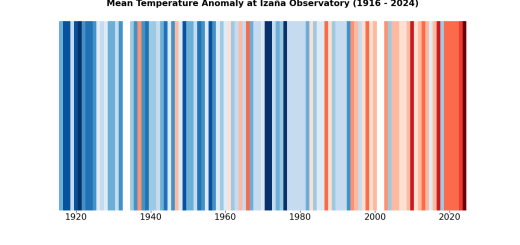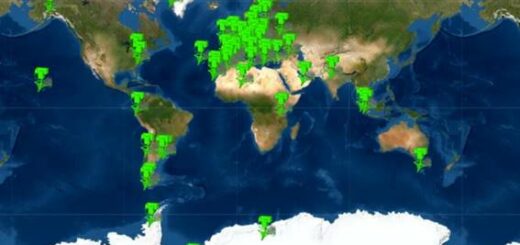Series of Atmospheric Nitrous Oxide measured at Izaña (2007-2010)
The graphic (click on the graphic to see it at a larger size) shows the molecular mixing ratio of atmospheric nitrous oxide (N2O) measured (daily means of the night period) at Izaña Atmospheric Observatory, from June 2007 till December 2010. During the night period, the atmospheric measurements at Izaña are representative of free troposphere conditions because during such period the observatory is not affected by local and regional sources of gases (during daytime there might be a very small influence).
N2O data is expressed in molecular mixing ratio in dry air, defined as the number of molecules of this gas divided by the total number of air molecules excluded the water vapour molecules. The molecular mixing ratio is expressed in parts per billion (ppb); for example, 322 ppb of N2O, means 322 molecules of nitrous oxide per every billion of dry air molecules. The daily mean values for the night period are plotted as red squares, whereas the blue line shows the interannual trend. The mean growth rate of N2O measured at Izaña during the period June 2007-December 2010 is +0.63 ppb/year.
The atmospheric greenhouse gases increases produced by anthropogenic emissions, are producing a global warming , which is causing the climatic change. The molecular N2O mixing ratio before the industrial revolution was 270 ppb, whereas for 2009 the global mean value was 322.5 ppb, which means a 19% increase above the preindustrial level. The radiative forcing produced by the increase in N2O is approximately ten times smaller than that produced by the increase in CO2. N2O is emitted to the atmosphere by natural and anthropogenic sources (oceans, soil, biomass burning, fertilizer use, and several industrial processes), accounting anthropogenic sources for 40% of total emissions (WMO Greenhouse Gas Bulletin nº 6, 2010).
At Izaña observatory, a gas chromatograph with an electron capture detector is used to measure N2O. An air sample is injected every 7.5 minutes, alternating between ambient air and working standard gas (high pressure tank). Every 2 weeks, the (quadratic) response function relative to the working standard gas is obtained using a set of 5 WMO tertiary standard gases. The configuration and operation of the instrumental system, and the posterior data processing, are very critical due to the high accuracy required for these measurements.








